Here we will resume our story.
An Introduction to the 'Shah of Shahs', 'King of Kings'
One important thing to know about Mohammad Reza Shah was that he was no fan of British imperialism and was an advocate for Iran's independence and industrial growth. That said, the Shah was a deeply flawed man who lacked the steadfastness to secure such a positive fate for Iran. After all, foreign-led coups had become quite common in Iran at that point.
He would become the Shah in 1941 at the age of 22, after the British forced his father Reza Shah into exile. By then, Persia had already experienced 70 years of British imperialism reducing its people to near destitution.
Mohammad Reza Shah had developed very good relations with the U.S. under President FDR, who at the behest of the Shah, formed the Iran Declaration which ended Iran's foreign occupation by the British and the Soviets after WWII.

Despite Reza Shah's problems (Mosaddegh was sent into exile during his reign), he had made significant achievements for Iran. Among these included the development of transportation infrastructure, 15 000 miles of road by 1940 and the construction of the Trans-Iranian Railway which opened in 1938.
Mohammad Reza Shah wished to continue this vein of progress, however, he would first have to go through Britain and increasingly the U.S. in order to fulfill Iran's vision for a better future.
In 1973, Mohammad Reza Shah thought he finally found his chance to turn Iran into the "world's sixth industrial power" in just one generation...
OPEC and the European Monetary System vs the 'Seven Sisters'
In 1960, OPEC was founded by five oil producing countries: Venezuela, Iraq, Saudi Arabia, Iran and Kuwait in an attempt to influence and stabilise the market price of oil, which would in turn stabilise their nation's economic return. The formation of OPEC marked a turning point toward national sovereignty over natural resources.
However, during this period OPEC did not have a strong voice in such affairs, the main reason being the "Seven Sisters" which controlled approximately 86% of the oil produced by OPEC countries. The "Seven Sisters" was the name for the seven transnational oil companies of the "Consortium of Iran" cartel which dominated the global petroleum industry, with British Petroleum owning 40% and Royal Dutch Shell 14%, giving Britain the lead at 54% ownership during this period.

The Shah saw the price increase as a way to pull his country out of backwardness. To the intense irritation of his sponsors, the Shah pledged to bring Iran into the ranks of the world's top ten industrial nations by the year 2000.
The Shah understood that in order for this vision to become a reality, Iran could not just stay as a crude oil producer but needed to invest in a more stable future through industrial growth. And as it just so happened, France and West Germany were ready to make an offer.
In 1978, France and West Germany led the European community, with the exception of Great Britain, in the formation of the European Monetary System (EMS). The EMS was a response to the controlled disintegration that had been unleashed on the world economy after the fixed exchange rate became a floating exchange rate in 1971.
French foreign minister Jean Francois-Poncet had told a UN press conference, that it was his vision that the EMS eventually replace the IMF and World Bank as the center of world finance.
For those who are unaware of the devastation that the IMF and World Bank have wreaked upon the world, refer to John Perkins' "Confession of an Economic Hit Man"... the situation is 10X worst today.
As early as 1977, France and West Germany had begun exploring the possibility of concretizing a deal with oil producing countries in which western Europe would supply high-technology exports, including nuclear technology, to the OPEC countries in exchange for long-term oil supply contracts at a stable price. In turn, OPEC countries would deposit their enormous financial surpluses into western European banks which could be used for further loans for development projects... obviously to the detriment of the IMF and World Bank hegemony.
 The Carter Administration was not happy with this, sending Vice President Walter Mondale (picture) to France and West Germany to "inform" them that the U.S. would henceforth oppose the sale of nuclear energy technology to the Third World...and thus they should do so as well. West Germany's nuclear deal with Brazil and France's promise to sell nuclear technology to South Korea had already come under heavy attack.
The Carter Administration was not happy with this, sending Vice President Walter Mondale (picture) to France and West Germany to "inform" them that the U.S. would henceforth oppose the sale of nuclear energy technology to the Third World...and thus they should do so as well. West Germany's nuclear deal with Brazil and France's promise to sell nuclear technology to South Korea had already come under heavy attack. In addition, the Shah had started a closer partnership with Iraq and Saudi Arabia cemented at OPEC meetings in 1977 and 1978. In a press conference in 1977 the Shah stated he would work for oil price stability. Together Saudi Arabia and Iran at the time produced nearly half of OPEC's entire output.
If an Iran-Saudi-Iraq axis established a permanent working relationship with the EMS it would have assembled an unstoppable combination against the London world financial center.
Recall that France and West Germany had already ignored British calls to boycott Iranian oil in 1951 under Mosaddegh, and therefore, there was no indication that they were going to follow suit with Britain and the U.S. this time either.
As far as London and Washington were concerned, the Shah's reign was over.
British Petroleum, BBC News and Amnesty International as Servants to the Crown
Were we to select a date for the beginning of the Iranian revolution it would be November 1976, the month that Amnesty International issued its report charging brutality and torture of political prisoners by the Shah of Iran.
Ironically, the SAVAK which was the secret police under the Shah from 1957 to 1979, was established and pretty much run by the SIS (aka MI6), CIA and the Israeli Mossad. This is a well-known fact, and yet, was treated as somehow irrelevant during Amnesty International's pleas for a humanitarian intervention into Iran.
For those who haven't already discovered Amnesty International's true colors from their recent "work" in Syria... it should be known that they work for British Intelligence.
Gruesome accounts of electric shock torture and mutilation were printed in the London Times, the Washington Post and other respected press. Within a few months, President Carter launched his own "human rights" campaign. With this, the international humanitarian outcry got bigger and louder demanding the removal of the Shah.

With the international foment intensifying, the British Broadcasting Corporation's (BBC) Persian language broadcasts into Iran fanned the flames of revolt.
During the entire year of 1978 the BBC stationed dozens of correspondents throughout the country in every remote town and village. BBC correspondents, often in the employ of the British secret service, worked as intelligence operatives for the revolution.
Each day the BBC would report in Iran gory accounts of alleged atrocities committed by the Iranian police, often without checking the veracity of the reports. It is now acknowledged that these news reports helped to fuel and even organise the political foment towards an Iranian revolution.
In 1978, British Petroleum (BP) was in the process of negotiating with the government of Iran the renewing of the 25 year contract made in 1953 after the Anglo-American coup against Mosaddegh. These negotiations collapsed in Oct 1978, at the height of the revolution. BP rejected the National Iranian Oil Company's (NIOC) demands, refusing to buy a minimum quantity of barrels of Iranian oil but demanding nonetheless the exclusive right to buy that oil should it wish to in the future!
The Shah and NIOC rejected BP's final offer. Had the Shah overcome the revolt, it appeared that Iran would have been free in its oil sales policy in 1979 - and would have been able to market its own oil to the state companies of France, Spain, Brazil and many other countries on a state-to-state basis.
In the American press hardly a single line was published about the Iranian fight with BP, the real humanitarian fight for Iranians.
The Sword of Damocles
The "Arc of Crisis" is a geopolitical theory focused on American/western politics in regards to the Muslim world. It was first concocted by British historian Bernard Lewis, who was regarded as the leading scholar in the world on oriental studies, especially of Islam, and its implications for today's western politics.
Bernard Lewis was acting as an advisor to the U.S. State Department from 1977-1981. Zbigniew Brzezinski, the National Security Advisor, would announce the U.S.' adoption of the "Arc of Crisis" theory by the American military and NATO in 1978.
It is widely acknowledged today, that the "Arc of Crisis" was primarily aimed at destabilising the USSR and Iran. This will be discussed further in Part 3 of this series.
Egypt and Israel were expected to act as the initiating countries for the expansion of NATO into the Middle East. Iran was to be the next link.
Iran's revolution was perfectly timed with the launching of the "Arc of Crisis", and NATO had its "humanitarian" cause for entering the scene.
However, the fight was not over in Iran.
 On Jan 4th, 1979, the Shah named Shapour Bakhtiar (picture), a respected member of the National Front, as Prime Minister of Iran. Bakhtiar was held in high regard by not only the French but Iranian nationalists. As soon as his government was ratified, Bakhtiar began pushing through a series of major reform acts: he completely nationalised all British oil interests in Iran, put an end to the martial law, abolished the SAVAK, and pulled Iran out of the Central Treaty Organization, declaring that Iran would no longer be "the gendarme of the Gulf".
On Jan 4th, 1979, the Shah named Shapour Bakhtiar (picture), a respected member of the National Front, as Prime Minister of Iran. Bakhtiar was held in high regard by not only the French but Iranian nationalists. As soon as his government was ratified, Bakhtiar began pushing through a series of major reform acts: he completely nationalised all British oil interests in Iran, put an end to the martial law, abolished the SAVAK, and pulled Iran out of the Central Treaty Organization, declaring that Iran would no longer be "the gendarme of the Gulf". Bakhtiar also announced that he would be removing Ardeshir Zahedi from his position as Iran's Ambassador to the U.S.
An apple that did not fall far from the tree, Ardeshir is the son of Fazlollah Zahedi, the man who led the coup against Mosaddegh and replaced him as Prime Minister!
Ardeshir was suspected to have been misinforming the Shah about the events surrounding the Iranian revolution and it was typical that he spoke to Brzezinski in Washington from Teheran over the phone at least once a day, often twice a day, as part of his "job" as Ambassador to the U.S. during the peak of the Iranian revolution.
With tensions escalating to a maximum, the Shah agreed to transfer all power to Bakhtiar and left Iran on Jan 16th,1979 for a "long vacation" (aka exile), never to return.
However, despite Bakhtiar's courageous actions, the damage was too far gone and the hyenas were circling round.
It is known that from Jan 7th to early Feb 1979, the No. 2 in the NATO chain of command, General Robert Huyser, was in Iran and was in frequent contact with Brzezinski during this period. It is thought that Huyser's job was to avoid any coup attempts to disrupt the take-over by Khomeini's revolutionary forces by largely misleading the Iranian generals with false intel and U.S. promises. Recently declassified documents on Huyser's visit to Iran confirm these suspicions.
During the Shah's "long vacation" his health quickly deteriorated. Unfortunately the Shah was never a good judge of character and kept a close dialogue with Henry Kissinger as to how to go about his health problems. By Oct 1979, the Shah was diagnosed with cancer and the decision was made to send him to the U.S. for medical treatment.
This decision was very much pushed for and supported by Brzezinski and Kissinger, despite almost every intelligence report indicating this would lead to a disastrous outcome.
In Nov 18th 1979, the New York Times reported:
'The decision was made despite the fact that Mr. Carter and his senior policy advisers had known for months that to admit the Shah might endanger Americans at the embassy in Teheran. An aide reported that at one staff meeting Mr. Carter had asked, "When the Iranians take our people in Teheran hostage, what will you advise me then?" '

With the taking of the hostages, the Carter Administration, as preplanned under the "Arc of Crisis", set into motion its scenario for global crisis management.
The hostage crisis, a 100% predictable response to the U.S.' decision to accept the Shah into America, was the external threat the Carter Administration needed to invoke the International Emergency Economic Powers Act, authorising the President to regulate international commerce after declaring a national emergency in response to an extraordinary threat
With this new authority, President Carter announced the freezing of all U.S.-Iranian financial assets, amounting to over $6 billion, including in branches of American banks abroad. Instantly, the world financial markets were thrown into a panic, and big dollar depositors in western Europe and the U.S., particularly the OPEC central banks, began to pull back from further commitments.
The Eurodollar market was paralyzed and most international lending halted until complex legal matters were sorted out.
However, the most serious consequence by far from the Carter Administration's "emergency actions," was in scaring other OPEC governments away from long-term lending precisely at a time when West Germany and France were seeking to attract deposits into the financial apparatus associated with the European Monetary System (EMS).
In addition, the Carter Administration's insistent demands that western Europe and Japan invoke economic sanctions against Iran was like asking them to cut their own throats. Yet, the raised political tensions succeeded in breaking apart the economic alliances and the slow blood-letting of Europe commenced.
Within days of the taking of the hostages, the pretext was given for a vast expansion of U.S. military presence in the Middle East and the Indian Ocean.
Sound familiar?
The message was not lost on Europe. In a Nov 28, 1979 column in Le Figaro, Paul Marie de la Gorce, who was in close dialogue with the French presidential palace, concluded that U.S. military and economic intervention into Iran would cause "more damages for Europe and Japan than for Iran." And that those who advocate such solutions are "consciously or not inspired by the lessons given by Henry Kissinger."
During the 444 day hostage crisis, a full-scale U.S. invasion was always looming overhead. Such an invasion was never about seizing the oil supply for the U.S., but rather to deny it to western Europe and Japan.
If the U.S. were to have seized the oil supply in Iran, the body blow to the western European economies would have knocked out the EMS. Thus, during the 444 day holding of American hostages, this threat was held over the head of Europe like the sword of Damocles.
It is sufficed to say that today's ongoing sanctions against Iran cannot be understood in their full weight and international ramifications without this historical background.





 del.icio.us
del.icio.us
 Digg
Digg





 Et ce « Contre-coup » d'État, en réponse à cette tentative de coup d'État « en douce », ce fut la victoire du Président Trump. À vrai dire pas uniquement, puisque cette victoire du Président Trump ne signifia en fait que le début d'une épuration antisubversive de longue haleine aux États-Unis, laquelle a eu lieu en coulisses depuis maintenant quatre ans (2016-2020), et n'est certainement pas terminée... Mais cette victoire de Trump fut l'élément historique qui rendit possible une Restauration de la République américaine, en forme de Seconde Révolution américaine dans « l'esprit de 1776 »[7].
Et ce « Contre-coup » d'État, en réponse à cette tentative de coup d'État « en douce », ce fut la victoire du Président Trump. À vrai dire pas uniquement, puisque cette victoire du Président Trump ne signifia en fait que le début d'une épuration antisubversive de longue haleine aux États-Unis, laquelle a eu lieu en coulisses depuis maintenant quatre ans (2016-2020), et n'est certainement pas terminée... Mais cette victoire de Trump fut l'élément historique qui rendit possible une Restauration de la République américaine, en forme de Seconde Révolution américaine dans « l'esprit de 1776 »[7]. 
 Pourtant, des voix s'élevèrent en effet en Occident, face à l'hystérie collective soudaine que suscita l'emballement médiatique en Occident. Face aux médias clamant à l'unisson l'extrême dangerosité du coronavirus, pour légitimer des mesures de contrôle des populations tellement extrêmes qu'elles rappelaient les totalitarismes du XXe siècle. Aux États-Unis notamment, par la voix du Président Trump lui-même[21] et de Qanon, la voix occulte des patriotes américains[22]. Au Québec avec le média patriote Radio Québec, et même quelques personnages publics courageux qui eurent le cran de prendre publiquement position[23]. En Allemagne également, avec notamment la lettre ouverte du Professeur Sucharit Bhakdi à la Chancelière Angela Merkel[24]. En France, enfin, avec ce qui constituera certainement le plus gros scandale d'État depuis l'affaire dite du « sang contaminé », durant les années 1980.
Pourtant, des voix s'élevèrent en effet en Occident, face à l'hystérie collective soudaine que suscita l'emballement médiatique en Occident. Face aux médias clamant à l'unisson l'extrême dangerosité du coronavirus, pour légitimer des mesures de contrôle des populations tellement extrêmes qu'elles rappelaient les totalitarismes du XXe siècle. Aux États-Unis notamment, par la voix du Président Trump lui-même[21] et de Qanon, la voix occulte des patriotes américains[22]. Au Québec avec le média patriote Radio Québec, et même quelques personnages publics courageux qui eurent le cran de prendre publiquement position[23]. En Allemagne également, avec notamment la lettre ouverte du Professeur Sucharit Bhakdi à la Chancelière Angela Merkel[24]. En France, enfin, avec ce qui constituera certainement le plus gros scandale d'État depuis l'affaire dite du « sang contaminé », durant les années 1980. 


 Et à présent, cette même entente russo-américaine occulte, qui remonte à Lincoln et dont on trouve d'autres traces bien peu comprises dans l'histoire, se renouvelle sous nos yeux. Non pas par cette pantalonnade ridicule du « complot russe », qui aurait prétendument abouti à la victoire de Trump de 2016, fondée sur la fable du « rapport Steele » qui reviendra brutalement contre ses instigateurs bientôt, et restera dans l'Histoire comme l'Obamagate...[42] Mais c'est bien à l'occasion de cette crise du coronavirus que par nécessité, un axe occulte russo-américain va perdurer, plein de réalisme face au danger qui menace tant la Russie que les États-Unis en tant qu'États souverains.
Et à présent, cette même entente russo-américaine occulte, qui remonte à Lincoln et dont on trouve d'autres traces bien peu comprises dans l'histoire, se renouvelle sous nos yeux. Non pas par cette pantalonnade ridicule du « complot russe », qui aurait prétendument abouti à la victoire de Trump de 2016, fondée sur la fable du « rapport Steele » qui reviendra brutalement contre ses instigateurs bientôt, et restera dans l'Histoire comme l'Obamagate...[42] Mais c'est bien à l'occasion de cette crise du coronavirus que par nécessité, un axe occulte russo-américain va perdurer, plein de réalisme face au danger qui menace tant la Russie que les États-Unis en tant qu'États souverains.  Si j'étais citoyen Américain, je serais très vraisemblablement accusé par Joe Biden de n'être « pas musulman » si je décidais de voter pour Donald Trump. Mais que lui répondrais-je ? Que les vrais musulmans savent ce qu'il s'est passé à Benghazi, et plus globalement durant toute l'époque de subversion des Clinton, Bush Jr. et Obama. Ils savent aussi qui a voulu créer une immigration déstabilisante pour les États-Unis depuis 1965 afin de ruiner leur modèle d'intégration vertueux par l'excellence, avec une pure volonté de subversion qui fut parfaitement identifiable sous l'ère Obama[50]. De même, les musulmans n'ignorent pas non plus les turpitudes personnelles transgressives de « creepy » Joe, et dès lors, ne sauraient accepter toute prétention de son auguste personne à leur donner des leçons de maintien et de morale. Pour toutes ces raisons, les hommes de bien musulmans, au même titre que les chrétiens américains, ne peuvent que se réjouir à l'avance de sa future défaite lors de la réélection à venir du Président Trump...
Si j'étais citoyen Américain, je serais très vraisemblablement accusé par Joe Biden de n'être « pas musulman » si je décidais de voter pour Donald Trump. Mais que lui répondrais-je ? Que les vrais musulmans savent ce qu'il s'est passé à Benghazi, et plus globalement durant toute l'époque de subversion des Clinton, Bush Jr. et Obama. Ils savent aussi qui a voulu créer une immigration déstabilisante pour les États-Unis depuis 1965 afin de ruiner leur modèle d'intégration vertueux par l'excellence, avec une pure volonté de subversion qui fut parfaitement identifiable sous l'ère Obama[50]. De même, les musulmans n'ignorent pas non plus les turpitudes personnelles transgressives de « creepy » Joe, et dès lors, ne sauraient accepter toute prétention de son auguste personne à leur donner des leçons de maintien et de morale. Pour toutes ces raisons, les hommes de bien musulmans, au même titre que les chrétiens américains, ne peuvent que se réjouir à l'avance de sa future défaite lors de la réélection à venir du Président Trump... 

 On voit encore d'autres traces de cette subversion, quand la BBC s'obstine à réécrire sans cesse l'Histoire occidentale dans un sens « antiraciste », en faisant jouer les personnages européens par des immigrés d'origine africaine.[60] Ceci est visible dans tous les pays occidentaux, jusqu'au ridicule quand Lancelot[61], Achille[62] ou Louis XIV[63] sont joués alors par des acteurs noirs. On attend avec impatience une histoire de Nelson Mandela, de Martin Luther King ou de l'Empereur Kanga Moussa du Mali joués par des acteurs blancs, afin d'être sûr que personne ne soit choqué par ces réécritures de l'Histoire ridiculement parasitées par des partis-pris idéologiques...
On voit encore d'autres traces de cette subversion, quand la BBC s'obstine à réécrire sans cesse l'Histoire occidentale dans un sens « antiraciste », en faisant jouer les personnages européens par des immigrés d'origine africaine.[60] Ceci est visible dans tous les pays occidentaux, jusqu'au ridicule quand Lancelot[61], Achille[62] ou Louis XIV[63] sont joués alors par des acteurs noirs. On attend avec impatience une histoire de Nelson Mandela, de Martin Luther King ou de l'Empereur Kanga Moussa du Mali joués par des acteurs blancs, afin d'être sûr que personne ne soit choqué par ces réécritures de l'Histoire ridiculement parasitées par des partis-pris idéologiques...  Depuis la victoire de Trump aux Etats-Unis et le net reflux de la pédocriminalité outre-Atlantique, la France passe de plus en plus pour le premier Etat pédocriminel au monde... Au point de susciter la préoccupation d'INTERPOL et d'EUROPOL. En France, chaque année, 58 000 enfants disparaissent et plus de 150.000 enfants sont violés[69], alors qu'à peine 0,3 % des agressions sexuelles sur mineurs sont condamnées ! C'est ainsi que l'on détruit la substance et l'avenir d'un peuple, et les Français qui tentent de protéger leurs enfants sont bâillonnés, dénigrés, voire accusés lorsqu'ils osent évoquer ce sujet. Selon Me Marie Grimaud, avocate pénaliste de l'association « Innocence en danger », « La France est l'eldorado des pédophiles. [...] Je le répète, aujourd'hui mieux vaut violer un enfant que de dealer du shit dans la rue. La sanction est beaucoup plus lourde pour le dealer que pour le violeur d'enfants ». Pire, elle rappelle que « si des magistrats estiment qu'un enfant de 5 à 6 ans peut éventuellement consentir à un rapport sexuel et éventuellement relaxer des individus pour cela, c'est que nous avons un problème dans la formation de nos magistrats. C'est ce que j'appelle la gouvernance des juges, qui va en deçà [au-delà] de ce que la loi prévoit »[70]. Djamila Allaf, directrice de l'association « Enfance au cœur », renchérit : en France, « les chiffres de la maltraitance des enfants sont terrifiants. Ils sont indignes d'une société qui se dit civilisée. Parce que le marqueur d'une civilisation, c'est sa capacité à protéger les plus faibles. Aujourd'hui, dans un pays comme la France, qui se dit pays des Droits de l'Homme, qui donne des leçons dans le monde entier, il y a 422 enfants qui sont violés chaque jour, 2 enfants qui meurent de maltraitance par jour. Et malgré cela on a toujours un silence sur cette question, ça reste tabou »[71]. Dans le contexte de l'Affaire d'Outreau, qui a défrayé la chronique, qui a fait énormément de mal à la cause des enfants en discréditant leur parole, une remarquable enquête non médiatisée d'un journaliste de l'AFP[72], rappelait qu'aucun enfant de l'affaire d'Outreau n'avait menti. Douze enfants ont bien été reconnus victimes de violences sexuelles dans un contexte de proxénétisme. Alors pourquoi leurs bourreaux ont-ils été protégés ? Était-ce un réseau susceptible de révéler des noms connus ? En tout cas, la France n'en sort pas grandie...et les enfants français continuent d'être torturés ![73]
Depuis la victoire de Trump aux Etats-Unis et le net reflux de la pédocriminalité outre-Atlantique, la France passe de plus en plus pour le premier Etat pédocriminel au monde... Au point de susciter la préoccupation d'INTERPOL et d'EUROPOL. En France, chaque année, 58 000 enfants disparaissent et plus de 150.000 enfants sont violés[69], alors qu'à peine 0,3 % des agressions sexuelles sur mineurs sont condamnées ! C'est ainsi que l'on détruit la substance et l'avenir d'un peuple, et les Français qui tentent de protéger leurs enfants sont bâillonnés, dénigrés, voire accusés lorsqu'ils osent évoquer ce sujet. Selon Me Marie Grimaud, avocate pénaliste de l'association « Innocence en danger », « La France est l'eldorado des pédophiles. [...] Je le répète, aujourd'hui mieux vaut violer un enfant que de dealer du shit dans la rue. La sanction est beaucoup plus lourde pour le dealer que pour le violeur d'enfants ». Pire, elle rappelle que « si des magistrats estiment qu'un enfant de 5 à 6 ans peut éventuellement consentir à un rapport sexuel et éventuellement relaxer des individus pour cela, c'est que nous avons un problème dans la formation de nos magistrats. C'est ce que j'appelle la gouvernance des juges, qui va en deçà [au-delà] de ce que la loi prévoit »[70]. Djamila Allaf, directrice de l'association « Enfance au cœur », renchérit : en France, « les chiffres de la maltraitance des enfants sont terrifiants. Ils sont indignes d'une société qui se dit civilisée. Parce que le marqueur d'une civilisation, c'est sa capacité à protéger les plus faibles. Aujourd'hui, dans un pays comme la France, qui se dit pays des Droits de l'Homme, qui donne des leçons dans le monde entier, il y a 422 enfants qui sont violés chaque jour, 2 enfants qui meurent de maltraitance par jour. Et malgré cela on a toujours un silence sur cette question, ça reste tabou »[71]. Dans le contexte de l'Affaire d'Outreau, qui a défrayé la chronique, qui a fait énormément de mal à la cause des enfants en discréditant leur parole, une remarquable enquête non médiatisée d'un journaliste de l'AFP[72], rappelait qu'aucun enfant de l'affaire d'Outreau n'avait menti. Douze enfants ont bien été reconnus victimes de violences sexuelles dans un contexte de proxénétisme. Alors pourquoi leurs bourreaux ont-ils été protégés ? Était-ce un réseau susceptible de révéler des noms connus ? En tout cas, la France n'en sort pas grandie...et les enfants français continuent d'être torturés ![73] 
 Le regretté Pierre Schoendoerfer considérait qu'un soldat avait pour devoir sacré de « mettre de l'ordre dans le désordre ». Le général Michael Flynn, directeur de campagne de Donald Trump, compara les citoyens réalisant avec responsabilité leur propre travail individuel de réinformation personnelle, à une « armée digitale » devant monter en ligne pour préserver son propre destin : sur Internet comme dans la vie réelle, afin de réduire toujours plus la surface d'action de la subversion sur les esprits non préparés. Certes, « l'Histoire est faite par peu d'Hommes », disait Jules César. Mais l'habitude résignée de voir un parti subversif, somme toute très faible, détourner impudemment un vieil État qui semble impuissant, alors que son Histoire permettrait pourtant de comprendre toutes les causes et conséquences de ce détournement, suscite une indolence qui prédispose à l'esclavage. Cette indolence résignée, c'était la situation exacte des États-Unis durant les mois qui précédèrent l'élection de Trump en 2016, lorsque les patriotes les mieux informés ne pouvaient que constater l'état de démoralisation du peuple : prêt à se soumettre à une justice subvertie qui venait de favoriser ce qui allait à coup sûr devenir une énième élection truquée, dont les États-Unis finissaient par avoir l'habitude...[80]
Le regretté Pierre Schoendoerfer considérait qu'un soldat avait pour devoir sacré de « mettre de l'ordre dans le désordre ». Le général Michael Flynn, directeur de campagne de Donald Trump, compara les citoyens réalisant avec responsabilité leur propre travail individuel de réinformation personnelle, à une « armée digitale » devant monter en ligne pour préserver son propre destin : sur Internet comme dans la vie réelle, afin de réduire toujours plus la surface d'action de la subversion sur les esprits non préparés. Certes, « l'Histoire est faite par peu d'Hommes », disait Jules César. Mais l'habitude résignée de voir un parti subversif, somme toute très faible, détourner impudemment un vieil État qui semble impuissant, alors que son Histoire permettrait pourtant de comprendre toutes les causes et conséquences de ce détournement, suscite une indolence qui prédispose à l'esclavage. Cette indolence résignée, c'était la situation exacte des États-Unis durant les mois qui précédèrent l'élection de Trump en 2016, lorsque les patriotes les mieux informés ne pouvaient que constater l'état de démoralisation du peuple : prêt à se soumettre à une justice subvertie qui venait de favoriser ce qui allait à coup sûr devenir une énième élection truquée, dont les États-Unis finissaient par avoir l'habitude...[80] 






 Sollte der Iran eine weitere Tanker-Flottille auf die Reise nach Südamerika schicken, könnten die Vereinigten Staaten ihre bisherige Zurückhaltung aufgeben und die Schiffe mit militärischer Gewalt an der Weiterfahrt hindern.
Sollte der Iran eine weitere Tanker-Flottille auf die Reise nach Südamerika schicken, könnten die Vereinigten Staaten ihre bisherige Zurückhaltung aufgeben und die Schiffe mit militärischer Gewalt an der Weiterfahrt hindern.

 Toutefois, après avoir initialement dissimulé la gravité de l’épidémie, face aux soupçons, au lieu de jouer la carte de la transparence, le gouvernement chinois a déchaîné sa propagande contre ceux qui osaient critiquer sa version officielle et n’a pas hésité à faire la leçon à aux pays occidentaux sur leur propre gestion de l’épidémie. Cette attitude a braqué contre la Chine la majorité des Etats occidentaux et des voix se sont élevées pour réclamer une enquête de l’Organisation mondiale de la santé sur l’origine du virus, ce qu’a refusé Pékin, de même qu’il a refusé de participer aux financements lors des réunions de donateurs pour lutter mondialement contre l’épidémie.
Toutefois, après avoir initialement dissimulé la gravité de l’épidémie, face aux soupçons, au lieu de jouer la carte de la transparence, le gouvernement chinois a déchaîné sa propagande contre ceux qui osaient critiquer sa version officielle et n’a pas hésité à faire la leçon à aux pays occidentaux sur leur propre gestion de l’épidémie. Cette attitude a braqué contre la Chine la majorité des Etats occidentaux et des voix se sont élevées pour réclamer une enquête de l’Organisation mondiale de la santé sur l’origine du virus, ce qu’a refusé Pékin, de même qu’il a refusé de participer aux financements lors des réunions de donateurs pour lutter mondialement contre l’épidémie.



 Sa vie bascule durant les années 1945-60, où elle devient une philosophe à la mode, soutenue par quantité de financiers et de littérateurs juifs, cyniques et conquérants. Durant les années 1960, un parent de l’épouse de son amant, Leonard Peikoff, anime le Mouvement objectiviste, à la gloire de la Dame.
Sa vie bascule durant les années 1945-60, où elle devient une philosophe à la mode, soutenue par quantité de financiers et de littérateurs juifs, cyniques et conquérants. Durant les années 1960, un parent de l’épouse de son amant, Leonard Peikoff, anime le Mouvement objectiviste, à la gloire de la Dame.
 « Je reproche aux miséricordieux de manquer facilement de pudeur, de délicatesse, de ne pas savoir garder les distances. La compassion prend trop vite l’odeur de la populace. Surmonter la pitié, c’est une vertu aristocratique » (Nietzsche, Ecce Homo, de 1888). La compassion est une « valeur amorale » et la charité – le don gratuit, sans espoir de réciprocité – une « morale d’esclaves »… une autre analyse en ferait plutôt une valeur de Seigneur moral ! « Les horreurs de la réalité sont infiniment plus nécessaires que ce petit bonheur qu’on appelle “la bonté” », cette bonté que Friedrich, solitaire, aigri par son insuccès en terres germaniques, assimile à un hédonisme moral (même source). Il fait de la magnanimité une « vengeance sublimée »… alors qu’elle est surtout une forme subtile de mépris.
« Je reproche aux miséricordieux de manquer facilement de pudeur, de délicatesse, de ne pas savoir garder les distances. La compassion prend trop vite l’odeur de la populace. Surmonter la pitié, c’est une vertu aristocratique » (Nietzsche, Ecce Homo, de 1888). La compassion est une « valeur amorale » et la charité – le don gratuit, sans espoir de réciprocité – une « morale d’esclaves »… une autre analyse en ferait plutôt une valeur de Seigneur moral ! « Les horreurs de la réalité sont infiniment plus nécessaires que ce petit bonheur qu’on appelle “la bonté” », cette bonté que Friedrich, solitaire, aigri par son insuccès en terres germaniques, assimile à un hédonisme moral (même source). Il fait de la magnanimité une « vengeance sublimée »… alors qu’elle est surtout une forme subtile de mépris.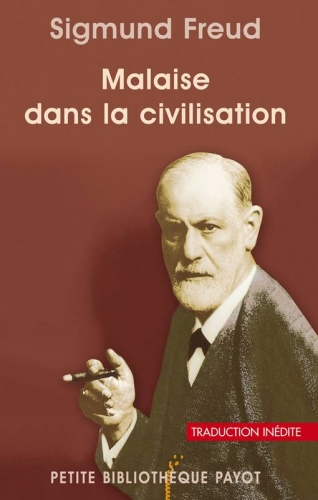 Dans son Malaise dans la civilisation (texte de 1930), le gourou de Vienne, alors en perte de vitesse, étant très contesté par ses concurrents et ses ex-élèves, écrit l’une des perles dont il a le secret : « Tout renoncement à une pulsion devient une source d’énergie pour la conscience », alors qu’elle ne fait généralement qu’alimenter la puissance d’une autre pulsion. Ne pas reprendre du gâteau fut une source d’intime satisfaction pour le stoïcien romain ; ne pas violer une jolie femme restera toujours une source d’honneur pour un homme.
Dans son Malaise dans la civilisation (texte de 1930), le gourou de Vienne, alors en perte de vitesse, étant très contesté par ses concurrents et ses ex-élèves, écrit l’une des perles dont il a le secret : « Tout renoncement à une pulsion devient une source d’énergie pour la conscience », alors qu’elle ne fait généralement qu’alimenter la puissance d’une autre pulsion. Ne pas reprendre du gâteau fut une source d’intime satisfaction pour le stoïcien romain ; ne pas violer une jolie femme restera toujours une source d’honneur pour un homme. Se réclamant officiellement de « l’objectivité », la dame a fourni à ses lecteurs des analyses très « subjectives » de tout ce qu’elle a traité. Plutôt que les rhapsodies très lyriques de la romancière-philosophe, c’est le pavé de Leonard Peikoff (1991) qui explique le mieux les concepts assez rudimentaires de la dame, qui a tenté d’amalgamer le cynisme de « Stirner » et le délire mégalomaniaque du Nietzsche de ses dernières années d’éveil cérébral aux théories sommaires des économistes ultralibéraux des XVIIIe et XIXe siècles.
Se réclamant officiellement de « l’objectivité », la dame a fourni à ses lecteurs des analyses très « subjectives » de tout ce qu’elle a traité. Plutôt que les rhapsodies très lyriques de la romancière-philosophe, c’est le pavé de Leonard Peikoff (1991) qui explique le mieux les concepts assez rudimentaires de la dame, qui a tenté d’amalgamer le cynisme de « Stirner » et le délire mégalomaniaque du Nietzsche de ses dernières années d’éveil cérébral aux théories sommaires des économistes ultralibéraux des XVIIIe et XIXe siècles.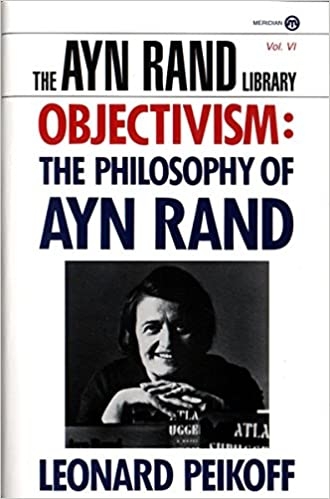 Chaque être humain est libre de butiner là où il trouve son bien, libre également de crier Au génie !, libre de vouloir faire partager son admiration. Toutefois, nier toute valeur à la compassion et repousser l’altruisme et la pitié, au profit de l’individualisme forcené ou d’un darwinisme social quelque peu absurde, ce sont de curieuses attitudes, peu enthousiasmantes.
Chaque être humain est libre de butiner là où il trouve son bien, libre également de crier Au génie !, libre de vouloir faire partager son admiration. Toutefois, nier toute valeur à la compassion et repousser l’altruisme et la pitié, au profit de l’individualisme forcené ou d’un darwinisme social quelque peu absurde, ce sont de curieuses attitudes, peu enthousiasmantes. B. Plouvier : Le dérangement du monde ou des erreurs et des hommes, L’Æncre, 2016
B. Plouvier : Le dérangement du monde ou des erreurs et des hommes, L’Æncre, 2016


















 Dans une tribune, une dizaine de militaires de haut rang ayant quitté le service et regroupés au sein du Cercle de réflexion interarmées, s’inquiètent de la participation de la France au prochain exercice militaire de l’OTAN.
Dans une tribune, une dizaine de militaires de haut rang ayant quitté le service et regroupés au sein du Cercle de réflexion interarmées, s’inquiètent de la participation de la France au prochain exercice militaire de l’OTAN.

![defendereurope20_bremerhaven_2[3300]-HcKsR2.jpg](http://euro-synergies.hautetfort.com/media/02/02/2832104459.jpg)




 L’historien français Jacques Benoist-Méchin (1901 – 1983) relate avec une grande précision comment les deux chefs d’Etat ont noué ce marchandage du siècle. Le résultat de cette discussion s’articule en quatre points : 1) la stabilité de l’Arabie saoudite fait partie des « intérêts vitaux » des États-Unis qui assurent, en contrepartie, la protection inconditionnelle de la famille Saoud et accessoirement celle du Royaume contre toute menace extérieure éventuelle ; 2) par extension, la stabilité de la péninsule arabique et le leadership régional de l’Arabie saoudite font aussi partie des « intérêts vitaux » des États-Unis ; 3) en contrepartie, le Royaume garantit l’essentiel de l’approvisionnement énergétique américain, la dynastie saoudienne n’aliénant aucune parcelle de son territoire.
L’historien français Jacques Benoist-Méchin (1901 – 1983) relate avec une grande précision comment les deux chefs d’Etat ont noué ce marchandage du siècle. Le résultat de cette discussion s’articule en quatre points : 1) la stabilité de l’Arabie saoudite fait partie des « intérêts vitaux » des États-Unis qui assurent, en contrepartie, la protection inconditionnelle de la famille Saoud et accessoirement celle du Royaume contre toute menace extérieure éventuelle ; 2) par extension, la stabilité de la péninsule arabique et le leadership régional de l’Arabie saoudite font aussi partie des « intérêts vitaux » des États-Unis ; 3) en contrepartie, le Royaume garantit l’essentiel de l’approvisionnement énergétique américain, la dynastie saoudienne n’aliénant aucune parcelle de son territoire. 





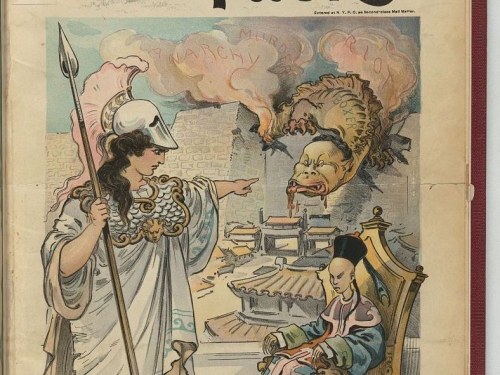
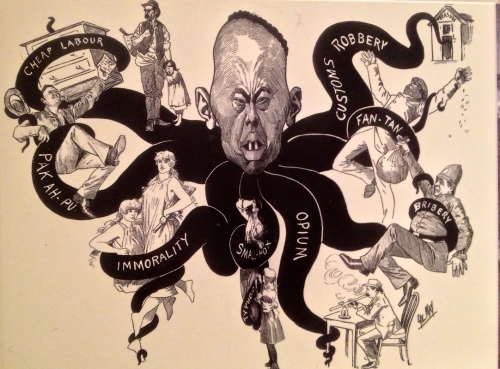

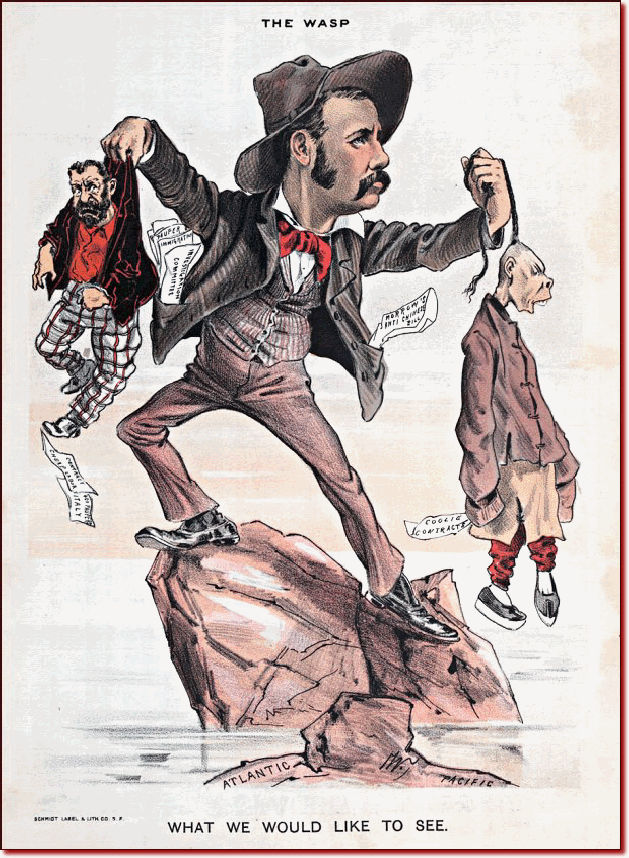
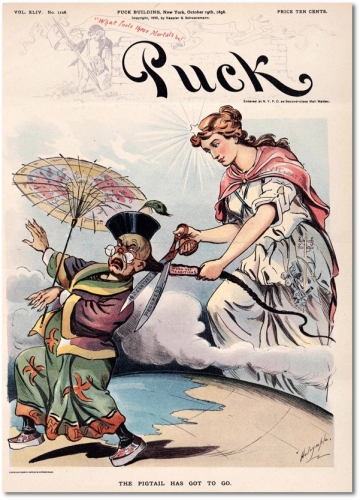

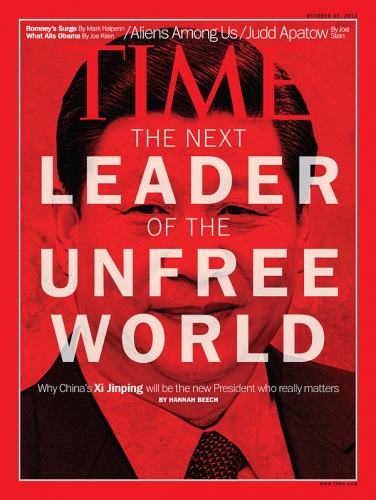
 Découvrez ce petit âne mignon sur la droite.
Découvrez ce petit âne mignon sur la droite.  En 1995, la journaliste américaine Laurie Garrett a publié un excellent livre intitulé «The Coming Plague: Newly Emerging Diseases in a World Out of Balance» dans lequel elle a expliqué pourquoi et même comment une pandémie mondiale émergerait naturellement en raison de la nature même de notre société moderne. Je recommande fortement ce livre en dépit du fait qu’il a maintenant un quart de siècle : il est très bien écrit, facile à lire et il est très convaincant en disant que de telles pandémies étaient inévitables, et sans besoin de faire appel aux théories non confirmées de la guerre biologique.
En 1995, la journaliste américaine Laurie Garrett a publié un excellent livre intitulé «The Coming Plague: Newly Emerging Diseases in a World Out of Balance» dans lequel elle a expliqué pourquoi et même comment une pandémie mondiale émergerait naturellement en raison de la nature même de notre société moderne. Je recommande fortement ce livre en dépit du fait qu’il a maintenant un quart de siècle : il est très bien écrit, facile à lire et il est très convaincant en disant que de telles pandémies étaient inévitables, et sans besoin de faire appel aux théories non confirmées de la guerre biologique. 





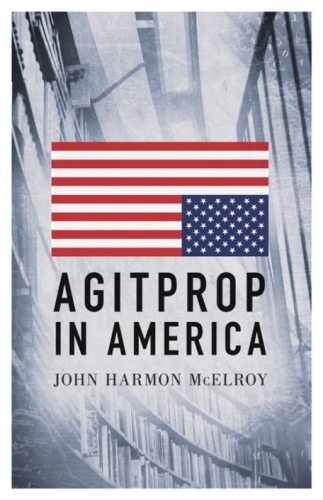 Agitprop in America
Agitprop in America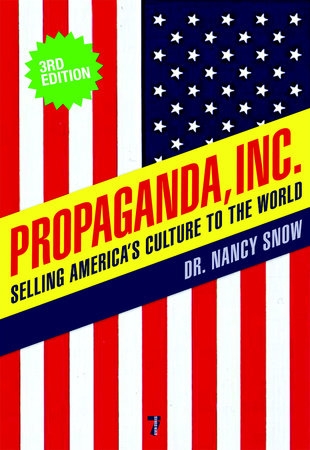 The book opens with the contention that “since the 1960s Marxists and their sympathizers in America have been using agitprop (an integration of intense agitation and propaganda invented by Lenin) to destroy America’s culture and build Cultural Marxism. To do this, agitprop has changed American speech and manipulated cultural values and beliefs.” American history has been rewritten “to make it into a Marxian tale of unmitigated oppression.” American contemporary society has been reinterpreted as the story of “one biologically defined ruling class (straight White males) “victimizing” all other biologically defined classes.” These Marxist dogmas “are causing the destruction of America’s exceptional culture.”
The book opens with the contention that “since the 1960s Marxists and their sympathizers in America have been using agitprop (an integration of intense agitation and propaganda invented by Lenin) to destroy America’s culture and build Cultural Marxism. To do this, agitprop has changed American speech and manipulated cultural values and beliefs.” American history has been rewritten “to make it into a Marxian tale of unmitigated oppression.” American contemporary society has been reinterpreted as the story of “one biologically defined ruling class (straight White males) “victimizing” all other biologically defined classes.” These Marxist dogmas “are causing the destruction of America’s exceptional culture.”

 The final section of the book consists of five short chapters on differing subjects. The first is a commentary on “The Failure of Marxism in the USSR and Successes of PC Marxism in America” which combines an interesting historical overview with a quite strident attack on the Obama years. The next chapter is a brief but lucid essay on how agitprop and PC Marxism has influenced U.S. government spending. The third, and shortest chapter in this section is an attempted rebuttal of the idea that America has become an imperialist nation. I tend to disagree with McElroy somewhat here, not because I believe America has an empire in the conventional sense, but because I believe it’s self-evident that elements of the U.S. government, most notably the neocons, have increasingly steered the country into a foreign interventionist position built around the idea of sustaining global finance capitalism and the state of Israel. Since McElroy’s musings on this topic are limited to a few pages, I was, however, spared any lasting distaste.
The final section of the book consists of five short chapters on differing subjects. The first is a commentary on “The Failure of Marxism in the USSR and Successes of PC Marxism in America” which combines an interesting historical overview with a quite strident attack on the Obama years. The next chapter is a brief but lucid essay on how agitprop and PC Marxism has influenced U.S. government spending. The third, and shortest chapter in this section is an attempted rebuttal of the idea that America has become an imperialist nation. I tend to disagree with McElroy somewhat here, not because I believe America has an empire in the conventional sense, but because I believe it’s self-evident that elements of the U.S. government, most notably the neocons, have increasingly steered the country into a foreign interventionist position built around the idea of sustaining global finance capitalism and the state of Israel. Since McElroy’s musings on this topic are limited to a few pages, I was, however, spared any lasting distaste.

 E' un fenomeno irripetibile, inquadrabile in tutto e per tutto nel XX secolo e figlio della palingenesi collettiva della prima guerra mondiale, che forgiò una generazione in quella che Benito Mussolini definirà come “trincerocrazia”, mito fondativo di una nuova gioventù che tornava a casa dopo quattro anni di trincea. Il fascismo mussoliniano è figlio della Grande Guerra, l’evento che ha mutato per sempre la storia, l’Europa e il mondo, e senza la quale non avremmo avuto né il nazionalsocialismo in Germania né la Rivoluzione d'Ottobre in Russia. E' nel suo mezzo, e qui aveva ragione Ernst Nolte, che scoppia la “europäische Bürgerkrieg” (1917 - 1945) fra due diverse concezioni del mondo, fra quella materialista storica incarnata nel marxismo-leninismo a quella romantica, idealista e volontarista incarnata dai fascismi. E' quel carnaio a creare l'idea che sarebbe nata un’aristocrazia guerriera venuta fuori direttamente dalla gerarchia della trincea, la trincerocrazia, cioè
E' un fenomeno irripetibile, inquadrabile in tutto e per tutto nel XX secolo e figlio della palingenesi collettiva della prima guerra mondiale, che forgiò una generazione in quella che Benito Mussolini definirà come “trincerocrazia”, mito fondativo di una nuova gioventù che tornava a casa dopo quattro anni di trincea. Il fascismo mussoliniano è figlio della Grande Guerra, l’evento che ha mutato per sempre la storia, l’Europa e il mondo, e senza la quale non avremmo avuto né il nazionalsocialismo in Germania né la Rivoluzione d'Ottobre in Russia. E' nel suo mezzo, e qui aveva ragione Ernst Nolte, che scoppia la “europäische Bürgerkrieg” (1917 - 1945) fra due diverse concezioni del mondo, fra quella materialista storica incarnata nel marxismo-leninismo a quella romantica, idealista e volontarista incarnata dai fascismi. E' quel carnaio a creare l'idea che sarebbe nata un’aristocrazia guerriera venuta fuori direttamente dalla gerarchia della trincea, la trincerocrazia, cioè
 Diverso il discorso della Nouvelle Droite o la Quarta Teoria Politica di Aleksandr Dugin, che è una riattualizzazione della konservative Revolution, che non punta alla creazione di uno stato totalitario (a differenza del fascismo, che è figlio della modernità) ma piuttosto organico, federale e continentale, pescando dal pre-moderno, dall'arcaismo, dal tradizionalismo, dai valori iperborei, dalle identità ancestrali che il cosiddetto "mondialismo", figlio della post-modernità, sta cancellando. L'alt-right invece è strettamente legata alla mentalità liberale e ai modelli di produzione capitalistici. Insomma, certi storici americani è meglio che studino altro!
Diverso il discorso della Nouvelle Droite o la Quarta Teoria Politica di Aleksandr Dugin, che è una riattualizzazione della konservative Revolution, che non punta alla creazione di uno stato totalitario (a differenza del fascismo, che è figlio della modernità) ma piuttosto organico, federale e continentale, pescando dal pre-moderno, dall'arcaismo, dal tradizionalismo, dai valori iperborei, dalle identità ancestrali che il cosiddetto "mondialismo", figlio della post-modernità, sta cancellando. L'alt-right invece è strettamente legata alla mentalità liberale e ai modelli di produzione capitalistici. Insomma, certi storici americani è meglio che studino altro!





 [ii] Emmanuel Breen, FCPA. La France face au droit américain de la lutte anti-corruption, coll. « Pratique des affaires », Joly éditions, 2017
[ii] Emmanuel Breen, FCPA. La France face au droit américain de la lutte anti-corruption, coll. « Pratique des affaires », Joly éditions, 2017

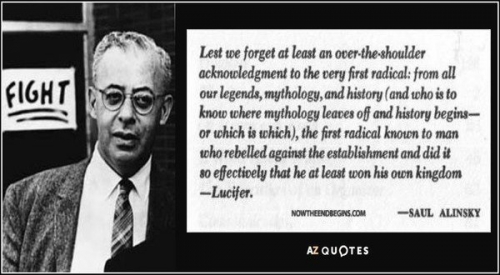
 1) Le pouvoir. Alinsky est loin d’épouser une vision irénique de la démocratie. Le principe primordial de l’organizer est celui du pouvoir. Le pouvoir, soutient-il, est « l’essence même, la dynamo de la vie » (dans certains textes, il ira jusqu’à citer Nietzsche)
1) Le pouvoir. Alinsky est loin d’épouser une vision irénique de la démocratie. Le principe primordial de l’organizer est celui du pouvoir. Le pouvoir, soutient-il, est « l’essence même, la dynamo de la vie » (dans certains textes, il ira jusqu’à citer Nietzsche)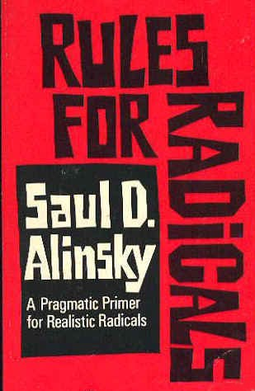 Surtout, Alinsky reconnaissait que les valeurs dénoncées par cette jeunesse en colère étaient justement celles auxquelles les pauvres pour lesquels il a milité aspiraient : en 1967, il remarquera : « Les gosses du SDS me disent : ‘Alinsky, tu sais ce que tu fais ? Tu organises les pauvres au nom de valeurs décadentes, ruinées, bourgeoises, et matérialistes.’ Et je me trouve en train de répondre : ‘Vous savez ce qu’ils veulent, les pauvres, dans ce pays ? Ils veulent une part plus grande dans ces valeurs décadentes, ruinées, bourgeoises ».
Surtout, Alinsky reconnaissait que les valeurs dénoncées par cette jeunesse en colère étaient justement celles auxquelles les pauvres pour lesquels il a milité aspiraient : en 1967, il remarquera : « Les gosses du SDS me disent : ‘Alinsky, tu sais ce que tu fais ? Tu organises les pauvres au nom de valeurs décadentes, ruinées, bourgeoises, et matérialistes.’ Et je me trouve en train de répondre : ‘Vous savez ce qu’ils veulent, les pauvres, dans ce pays ? Ils veulent une part plus grande dans ces valeurs décadentes, ruinées, bourgeoises ».
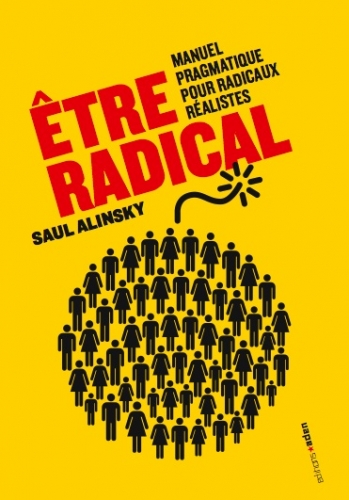 Situé au croisement de la tradition du « self-made man » et d’une sorte d’autogestion à l’américaine, Alinsky insiste toujours sur la nécessité des pauvres de pourvoir à leurs intérêts, mêmes « bourgeois » et « décadents », et nourrit un profond mépris pour les « libéraux » (au sens américain du terme, donc la gauche) qui, en prétendant connaître les intérêts profonds des couches sociales démunies, ne font que les infantiliser. Mais de là à rejoindre les critiques libérales (au sens européen) de l’Etat-providence ? Rappelons qu’en 1996, le président Clinton, appuyé par les Républicains, adopta la loi sur la « responsabilité personnelle » (Personal Responsibility and Work Opportunity Reconciliation Act, PRWORA), qui supprima de nombreuses allocations destinées aux plus démunis (en particulier celles destinées aux enfants), en les remplaçant, au niveau des Etats fédérés, par une politique dite de « workfare », qui lie le droit aux prestations sociales à l’obligation de travailler (même dans des conditions indignes). Clinton annonça à cette occasion que « l’ère du big government » est terminé aux Etats-Unis. En dépit de son engagement profond pour les pauvres, Alinsky et sa méthode ne constituent-ils pas, par le biais de leur critique des aides gouvernementales au nom du savoir-faire spontané de la communauté, la voie détournée vers le « workfare » ?
Situé au croisement de la tradition du « self-made man » et d’une sorte d’autogestion à l’américaine, Alinsky insiste toujours sur la nécessité des pauvres de pourvoir à leurs intérêts, mêmes « bourgeois » et « décadents », et nourrit un profond mépris pour les « libéraux » (au sens américain du terme, donc la gauche) qui, en prétendant connaître les intérêts profonds des couches sociales démunies, ne font que les infantiliser. Mais de là à rejoindre les critiques libérales (au sens européen) de l’Etat-providence ? Rappelons qu’en 1996, le président Clinton, appuyé par les Républicains, adopta la loi sur la « responsabilité personnelle » (Personal Responsibility and Work Opportunity Reconciliation Act, PRWORA), qui supprima de nombreuses allocations destinées aux plus démunis (en particulier celles destinées aux enfants), en les remplaçant, au niveau des Etats fédérés, par une politique dite de « workfare », qui lie le droit aux prestations sociales à l’obligation de travailler (même dans des conditions indignes). Clinton annonça à cette occasion que « l’ère du big government » est terminé aux Etats-Unis. En dépit de son engagement profond pour les pauvres, Alinsky et sa méthode ne constituent-ils pas, par le biais de leur critique des aides gouvernementales au nom du savoir-faire spontané de la communauté, la voie détournée vers le « workfare » ? Mais Obama évoque le pouvoir de séduction qu’exerça sur lui le langage alinskien au cours de sa formation comme organizer : « L’action, le pouvoir, l’intérêt particulier. J’aimais ces concepts. Ils témoignaient d’un certain réalisme, d’un refus temporel pour le sentiment ; la politique, et non la religion ».
Mais Obama évoque le pouvoir de séduction qu’exerça sur lui le langage alinskien au cours de sa formation comme organizer : « L’action, le pouvoir, l’intérêt particulier. J’aimais ces concepts. Ils témoignaient d’un certain réalisme, d’un refus temporel pour le sentiment ; la politique, et non la religion ».
 Wer gegen die Verordnung verstieß und sein Gold trotz Verpflichtung nicht an den Staat verkaufte, musste mit einer Geldstrafe von bis zu 10.000 US-Dollar (nach heutigem Wert rund 200.000 Dollar) bzw. einer Haftstrafe rechnen, die in schweren Fällen zehn Jahre betragen konnte. Gold im Wert von über Einhundert Dollar (beim festgelegten Ankaufspreis von 20,67 Dollar also etwa 5 Unzen), welches die Polizei bei Durchsuchungen sicherstellte, wurde entschädigungslos beschlagnahmt.
Wer gegen die Verordnung verstieß und sein Gold trotz Verpflichtung nicht an den Staat verkaufte, musste mit einer Geldstrafe von bis zu 10.000 US-Dollar (nach heutigem Wert rund 200.000 Dollar) bzw. einer Haftstrafe rechnen, die in schweren Fällen zehn Jahre betragen konnte. Gold im Wert von über Einhundert Dollar (beim festgelegten Ankaufspreis von 20,67 Dollar also etwa 5 Unzen), welches die Polizei bei Durchsuchungen sicherstellte, wurde entschädigungslos beschlagnahmt. Es war US-Präsident Richard Nixon, der dem Goldstandard knapp 40 Jahre später endgültig den Garaus machte. Am 15. August 1971 hob Nixon die Goldbindung des US-Dollar und damit den Goldstandard auf. Hintergrund war der rasant wachsende Welthandel, der den teilweise goldgedeckten Dollar als Ankerwährung überforderte, aber auch die hohen Kosten des Vietnamkrieges, der die Vereinigten Staaten auch finanziell stark belastete. Nixon versprach seinen Landsleuten, dass der Dollar nach dem Ende des Goldstandards seinen Wert behalten werde. Das hingegen erwies sich als falsch. Nach dem amtlichen Verbraucherindex hat der US-Dollar seit 1971 mehr als 80 Prozent seiner Kaufkraft eingebüßt. Das spiegelt sich auch im Goldpreis wieder, der von 35 Dollar auf aktuell 1.650 Dollar anstieg, ein Zuwachs um mehr als 4.600 Prozent!
Es war US-Präsident Richard Nixon, der dem Goldstandard knapp 40 Jahre später endgültig den Garaus machte. Am 15. August 1971 hob Nixon die Goldbindung des US-Dollar und damit den Goldstandard auf. Hintergrund war der rasant wachsende Welthandel, der den teilweise goldgedeckten Dollar als Ankerwährung überforderte, aber auch die hohen Kosten des Vietnamkrieges, der die Vereinigten Staaten auch finanziell stark belastete. Nixon versprach seinen Landsleuten, dass der Dollar nach dem Ende des Goldstandards seinen Wert behalten werde. Das hingegen erwies sich als falsch. Nach dem amtlichen Verbraucherindex hat der US-Dollar seit 1971 mehr als 80 Prozent seiner Kaufkraft eingebüßt. Das spiegelt sich auch im Goldpreis wieder, der von 35 Dollar auf aktuell 1.650 Dollar anstieg, ein Zuwachs um mehr als 4.600 Prozent!



